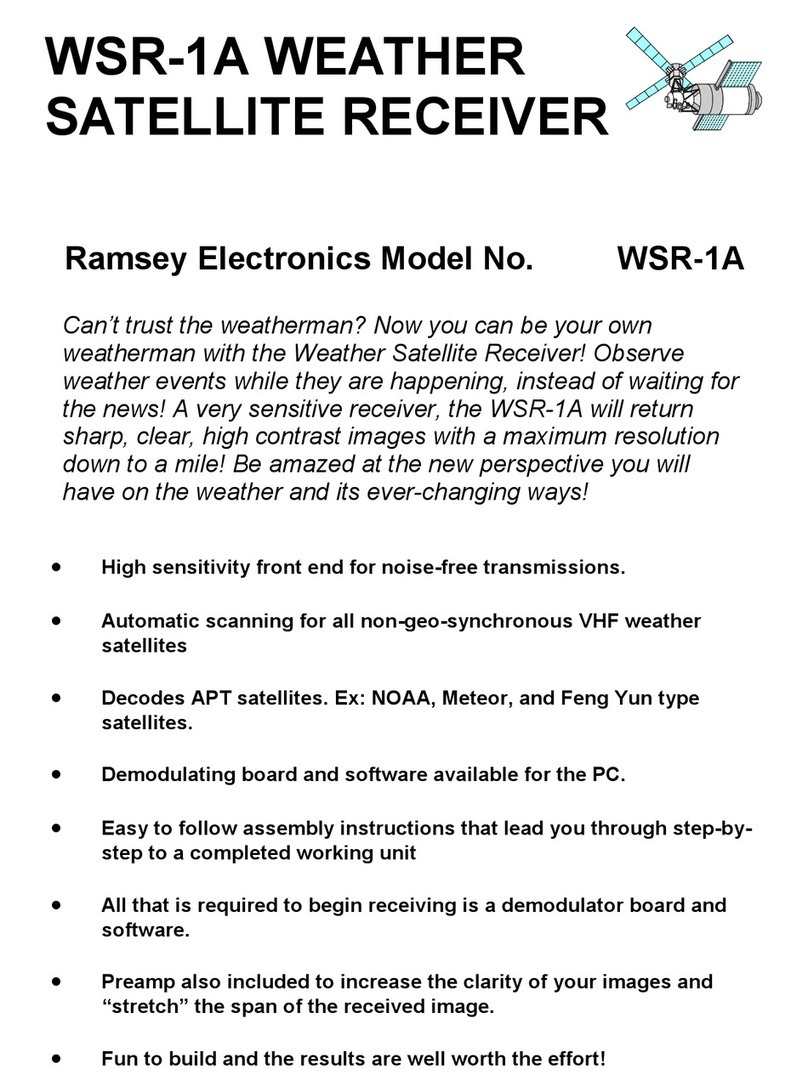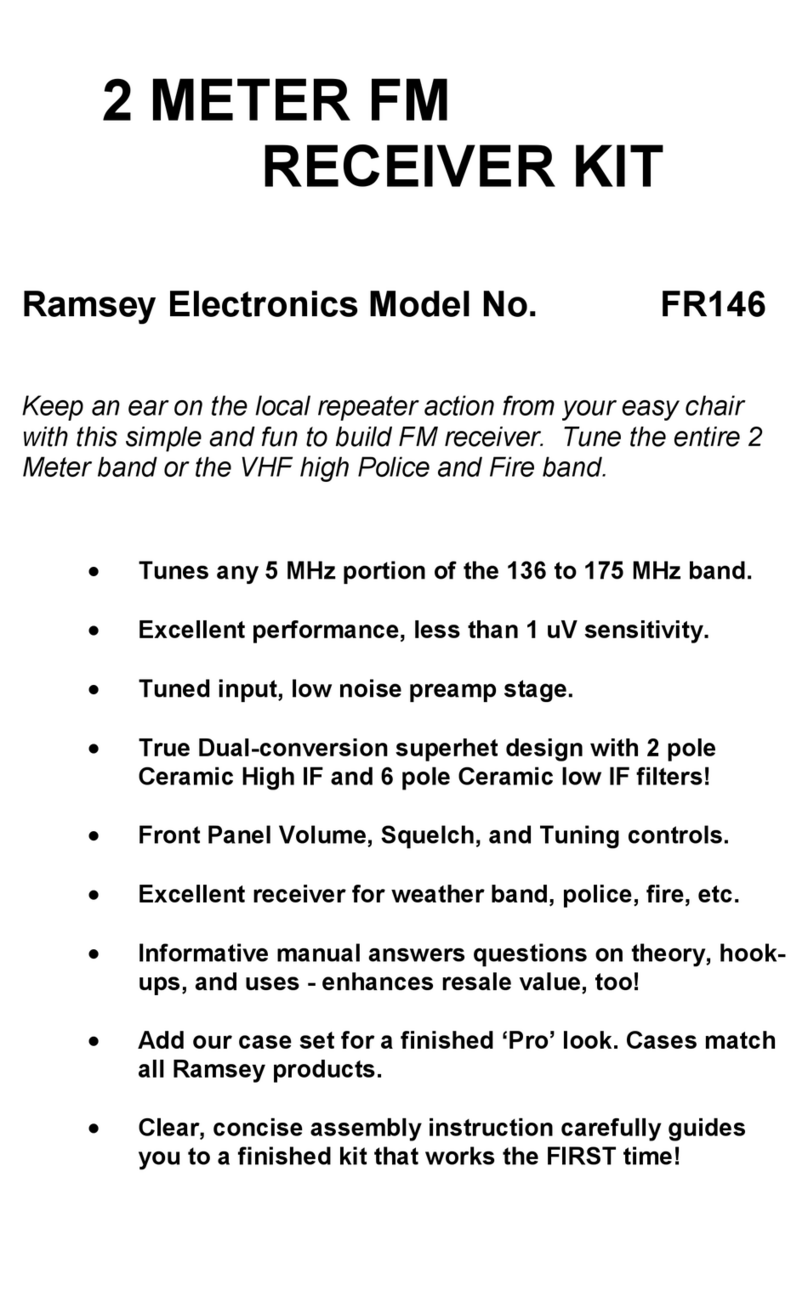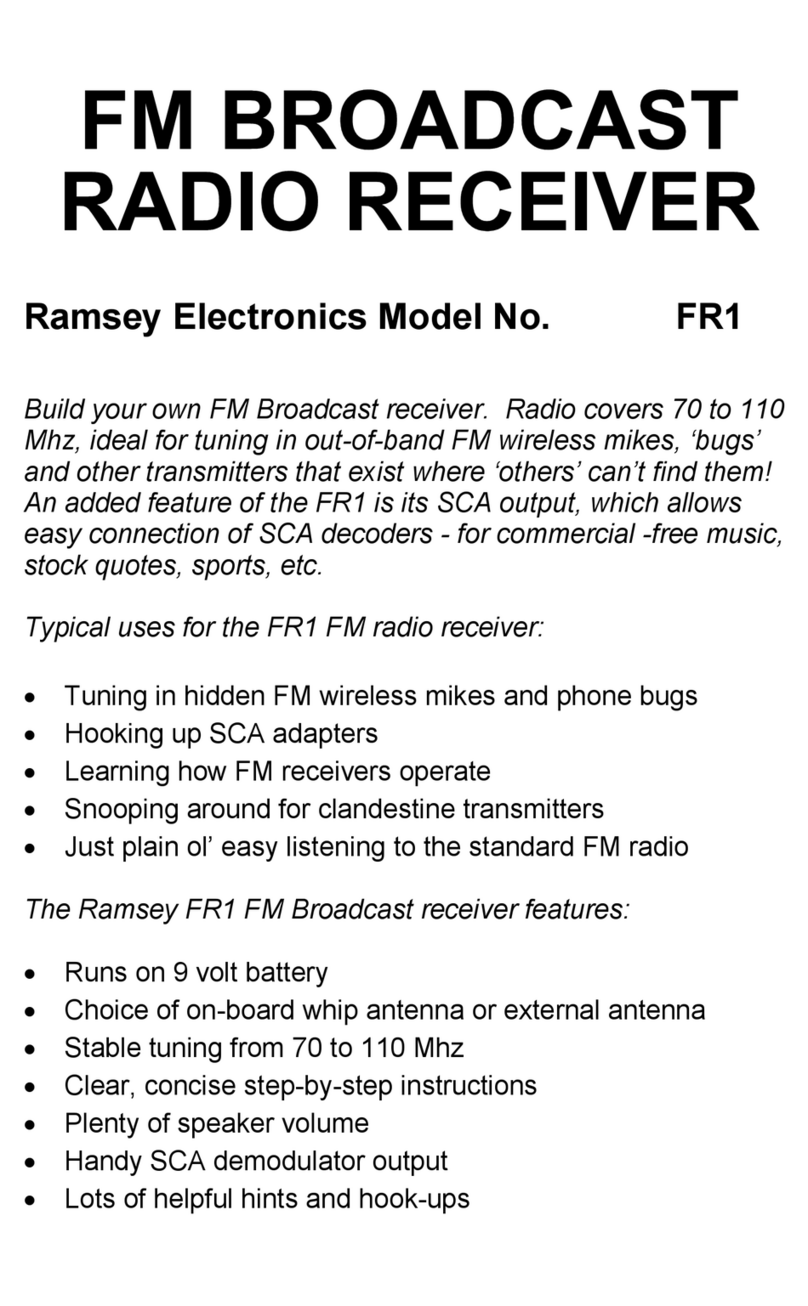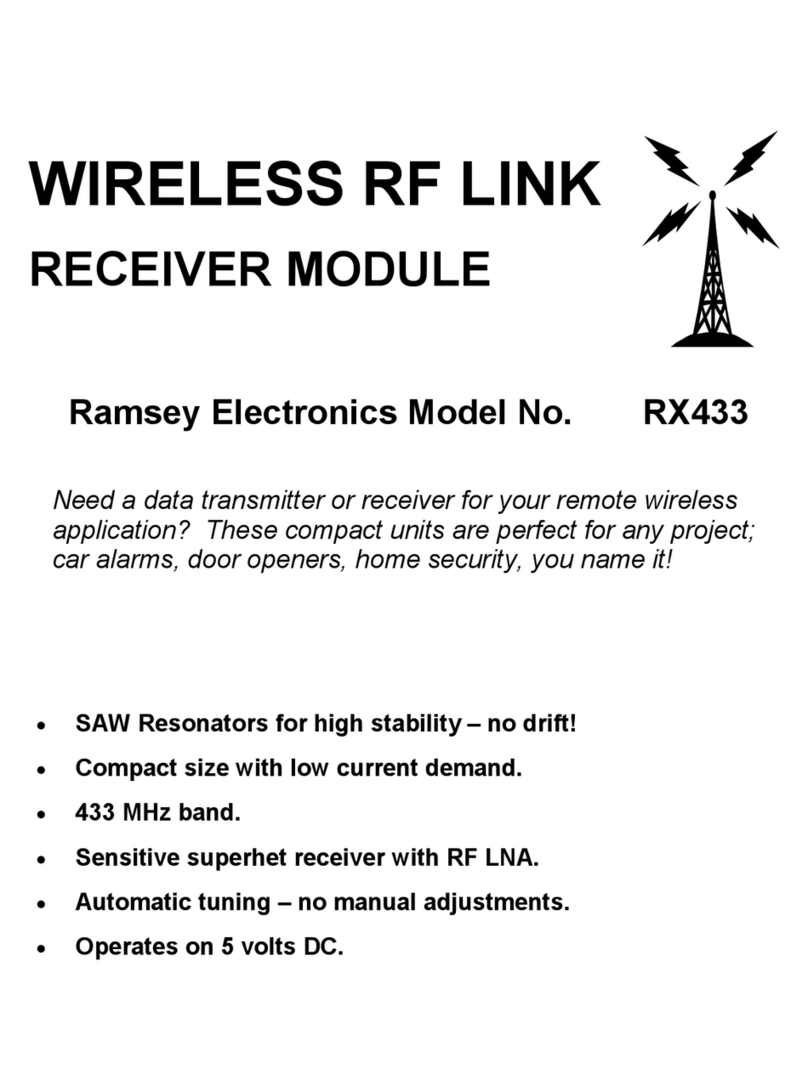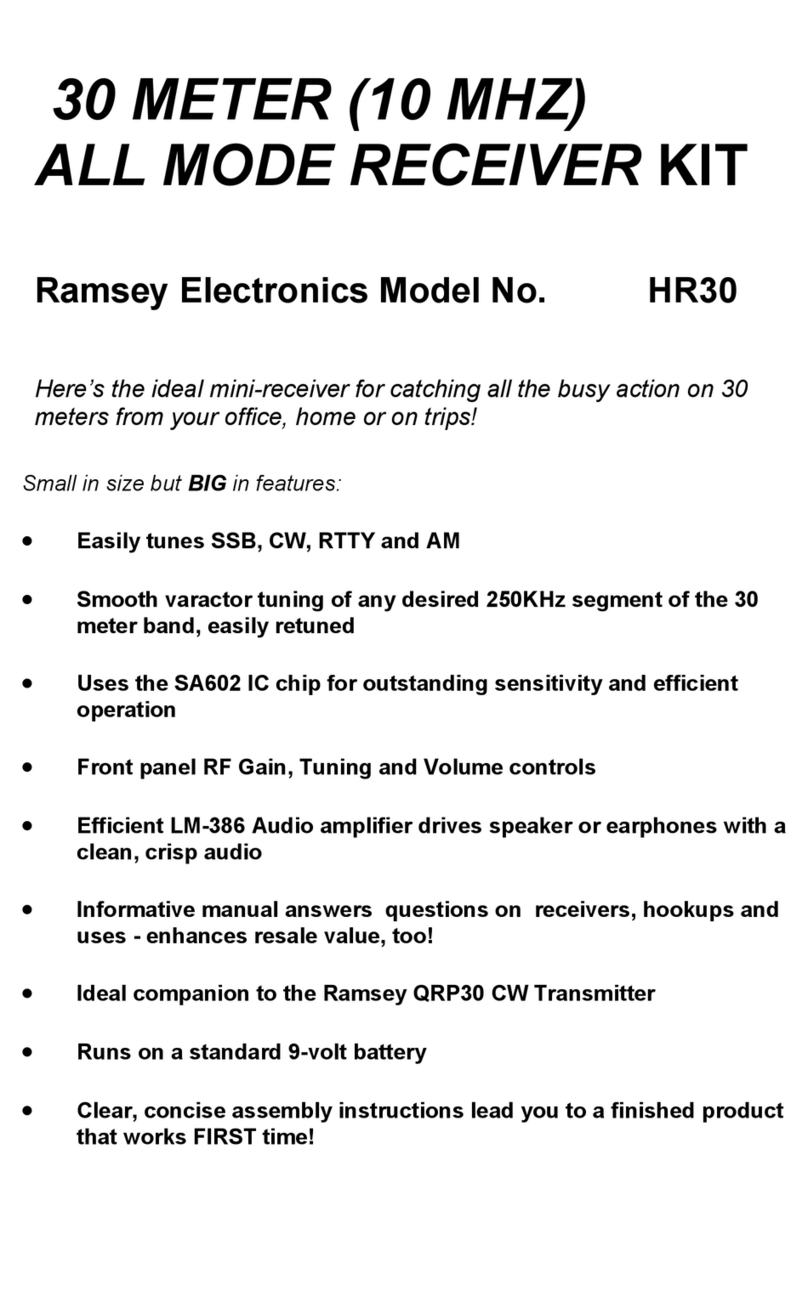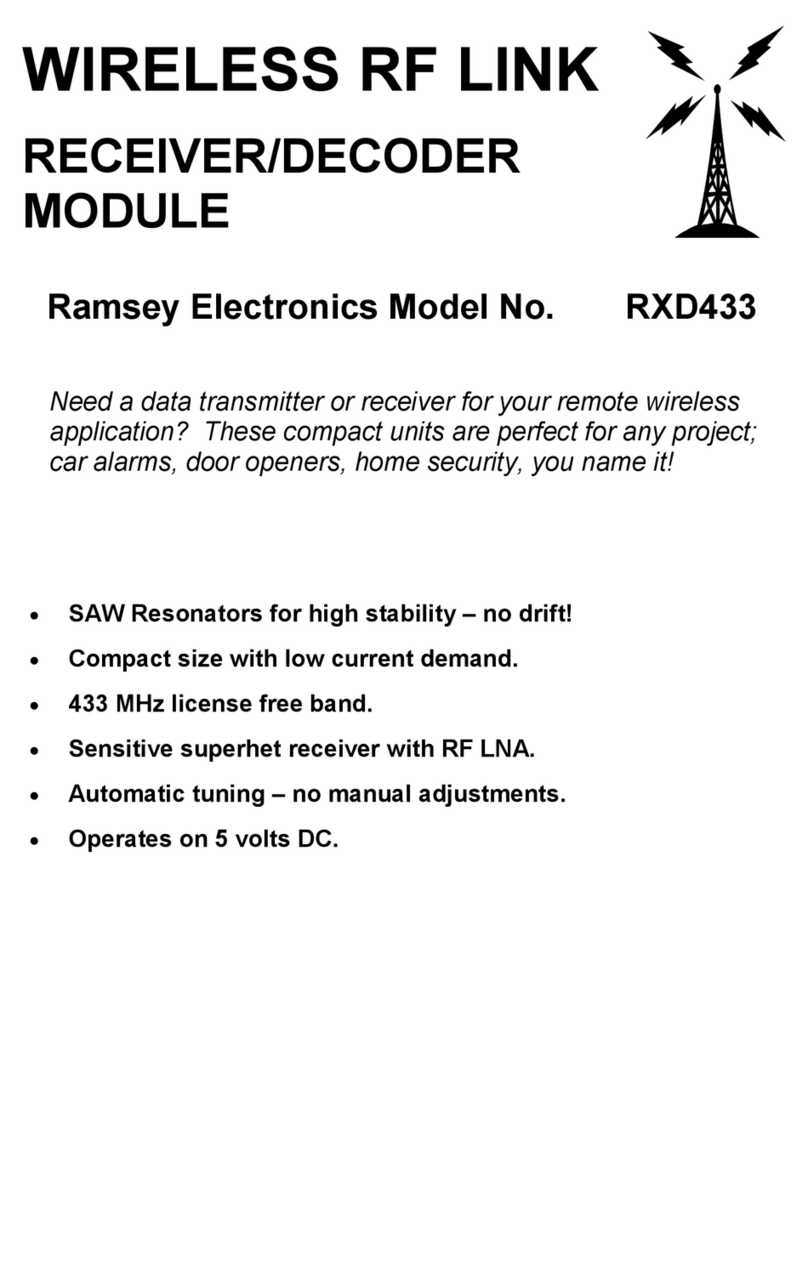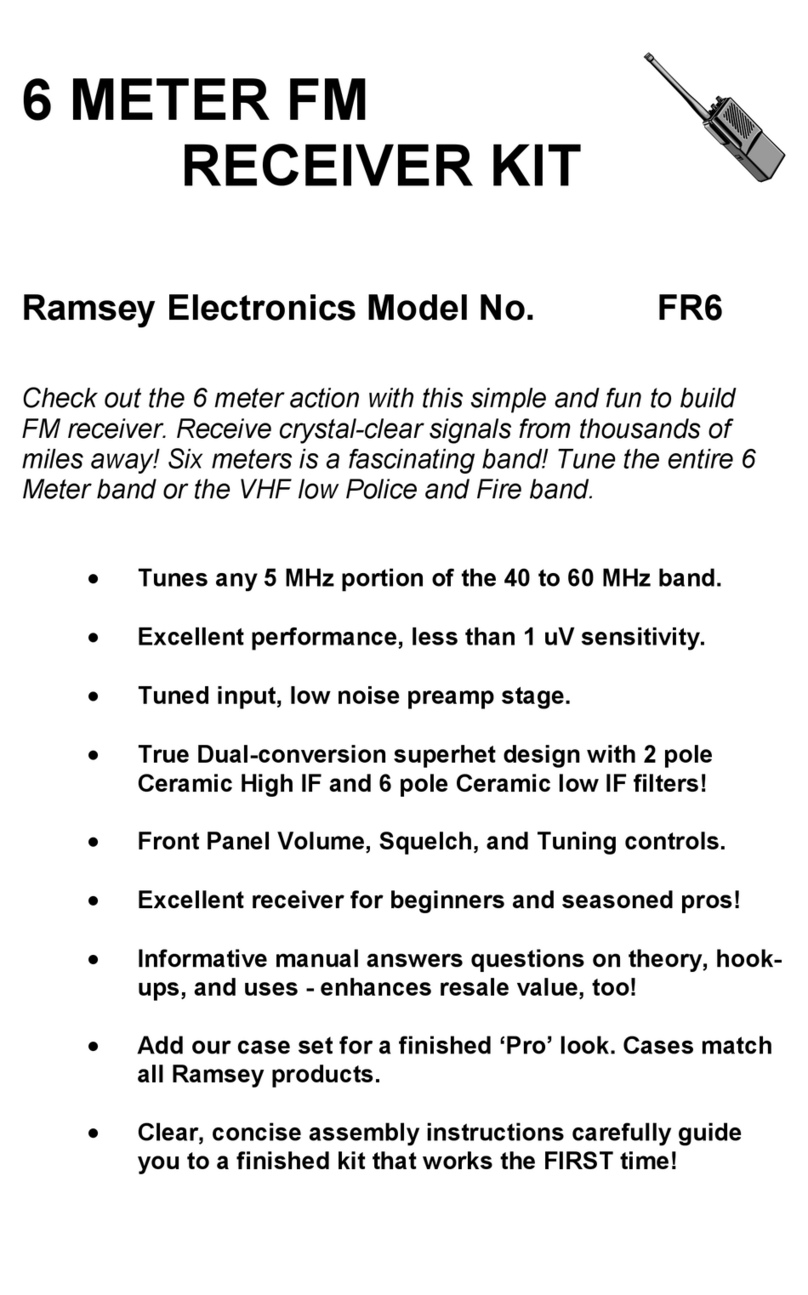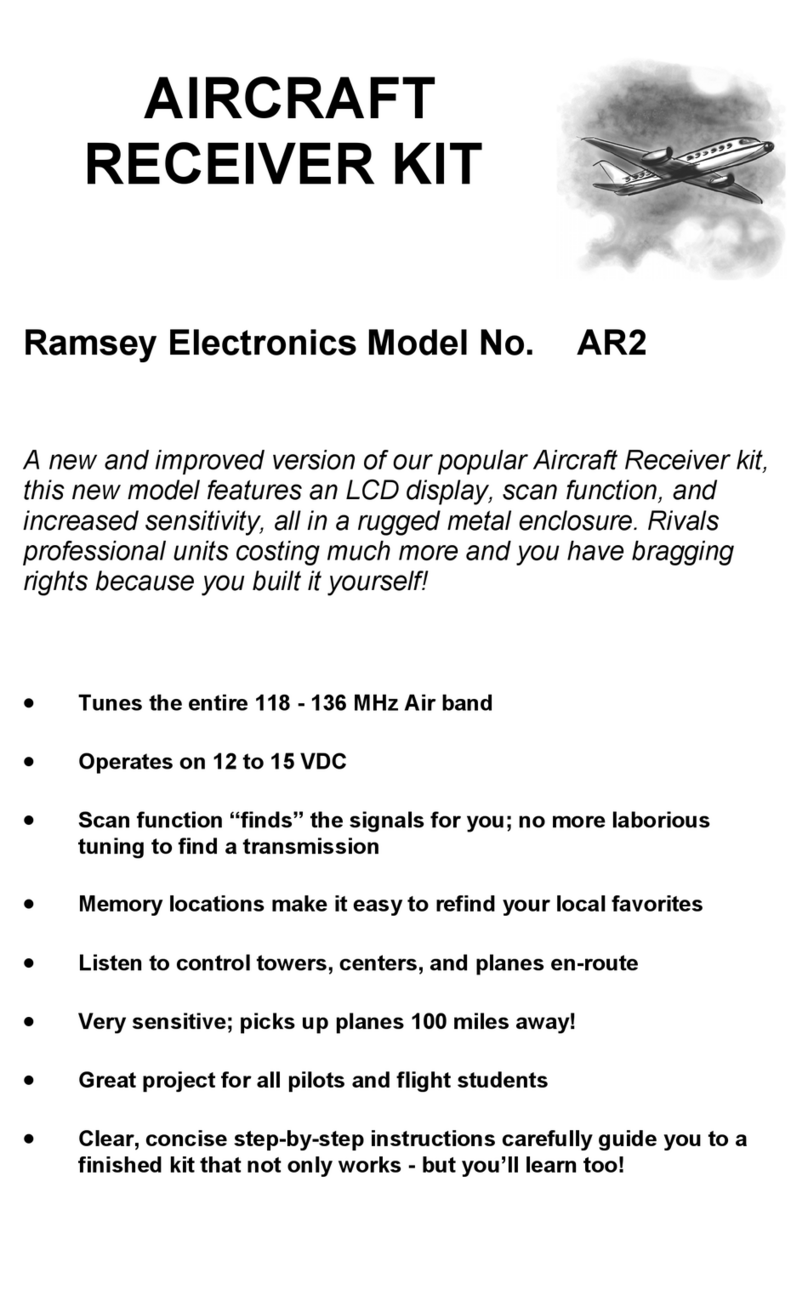
FR-10 •4
INTRODUCTION
There's not a lot to say about using the FR10 receiver once its been
correctly built and aligned. If 10 meters is "dead" you'll hear little or
nothing. If Ten is "open" there will be an amazing variety of crystal-
clear signals from many thousands of miles away.
In the first serious test of this receiver, booming signals from the US
Northeast and Midwest as well as Scotland and Ireland were logged
from a site in Florida! The strength and clarity of GM4DLU in Scotland
was simply astounding! Another listening session logged a station in
Washington, DC conversing with one in Wisconsin via a repeater in
Dallas!
This receiver is a good project for amateurs wishing to become more
familiar with 10 meter FM before choosing a transceiver, or for those
active on 10 who want an inexpensive receiver to take on trips, keep
in a briefcase or to watch for band openings.
Most Ramsey Electronics can be classified as "Skill Level 1" if we use
the old Heathkit guidelines for ease of assembly. That means that our
kits are intended to be successful for first-time kit builders. This FR10
FM Receiver is best regarded as a "Skill Level 2" project, and should
not be taken lightly, even by experienced, licensed radio amateurs.
Still, this step-by-step manual is written with the beginner in mind,
because we are well aware of the fascination that Ten Meters and its
maze of repeaters holds for newcomers, which means this could be
your very first kit project. The same holds true for those who just want
to peek in on LOW VHF public service communications without the
cost of a scanner. To be honest, we'd like to see first-time builders
start out with an easier kit such as the Ramsey HR40 Forty Meter
receiver before assembling the FR10, but we are confident that you
can construct the FR10 successfully if you follow this manual carefully
and patiently.
Before beginning the project or even studying the circuit description, it
is worthwhile to develop some prior respect for how much receiver is
packed onto the circuit board. The nine semiconductor devices
(diodes, transistors and IC chips) give the equivalent of about 30 or
more transistors and diodes. And, in addition to four inductors, a
